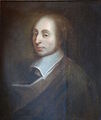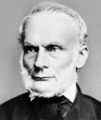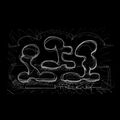Template:Selected anniversaries/August 24: Difference between revisions
No edit summary |
No edit summary |
||
| Line 2: | Line 2: | ||
||79: The long-dormant Mount Vesuvius erupted in Italy, burying the Roman cities of Pompeii and Herculaneum in volcanic ash. An estimated 20,000 people died. When discovered, the sites became astonishing archaeological time capsules. Official excavations began on 6 Apr 1748 of behalf of the Italian king's interest in collecting antiquities. | ||79: The long-dormant Mount Vesuvius erupted in Italy, burying the Roman cities of Pompeii and Herculaneum in volcanic ash. An estimated 20,000 people died. When discovered, the sites became astonishing archaeological time capsules. Official excavations began on 6 Apr 1748 of behalf of the Italian king's interest in collecting antiquities. | ||
||394: The Graffito of Esmet-Akhom, the latest known inscription in Egyptian hieroglyphs, was written. | ||394: The Graffito of Esmet-Akhom, the latest known inscription in Egyptian hieroglyphs, was written. Pic. | ||
||1217: Eustace the Monk dies ... pirate. | ||1217: Eustace the Monk dies ... pirate. No DOB. Pic (Illustration by Matthew Paris). | ||
||1456: The printing of the Gutenberg Bible is completed. | ||1456: The printing of the Gutenberg Bible is completed. | ||
| Line 13: | Line 13: | ||
File:Blaise Pascal.jpg|link=Blaise Pascal (nonfiction)|1654: [[Blaise Pascal (nonfiction)|Blaise Pascal]] writes to [[Pierre de Fermat (nonfiction)|Pierre de Fermat]], describing his solution to the Problem of the Points (a probability problem) and asking Fermat to critique it. | File:Blaise Pascal.jpg|link=Blaise Pascal (nonfiction)|1654: [[Blaise Pascal (nonfiction)|Blaise Pascal]] writes to [[Pierre de Fermat (nonfiction)|Pierre de Fermat]], describing his solution to the Problem of the Points (a probability problem) and asking Fermat to critique it. | ||
||1680: Ferdinand Bol dies ... painter, etcher and draftsman, student of Rembrandt. Pic. | |||
||1771: Georg Friedrich von Reichenbach dies ... scientific instrument maker, was born at Durlach in Baden on 24 August 1771. Pics. | ||1771: Georg Friedrich von Reichenbach dies ... scientific instrument maker, was born at Durlach in Baden on 24 August 1771. Pics. | ||
| Line 20: | Line 22: | ||
File:James Watt.jpg|link=James Watt (nonfiction)|1819: inventor, engineer, and chemist [[James Watt (nonfiction)|James Watt]] dies. He made major improvements to the steam engine. | File:James Watt.jpg|link=James Watt (nonfiction)|1819: inventor, engineer, and chemist [[James Watt (nonfiction)|James Watt]] dies. He made major improvements to the steam engine. | ||
||1803: Gregorio Fontana dies ... mathematician. He was chair of mathematics at the university of Pavia succeeding Roger Joseph Boscovich. He has been credited with the introduction of polar coordinates. | ||1803: Gregorio Fontana dies ... mathematician. He was chair of mathematics at the university of Pavia succeeding Roger Joseph Boscovich. He has been credited with the introduction of polar coordinates. Pic. | ||
||1816: Daniel Gooch born ... laid the first successful transatlantic cables. Sir Daniel Gooch was an English railway pioneer and inventor who was trained in George Stephenson & Edward Pease's works at Newcastle upon Tyne. He was locomotive superintendent of Great Western Railway for 27 years, where as Brunel's right-hand man, he designed the best broad-gauge engines and invented “the suspended link motion with the shifting radius link” (1843). Gooch also experimented with a dynamometer carriage. In 1864 he resigned to concentrate on developing telegraphic communication. Sir Daniel Gooch and his son Charles, were the engineers who laid the first Atlantic Cable from the steamship The Great Eastern. Daniel became member of Parliment. Pic. | ||1816: Daniel Gooch born ... laid the first successful transatlantic cables. Sir Daniel Gooch was an English railway pioneer and inventor who was trained in George Stephenson & Edward Pease's works at Newcastle upon Tyne. He was locomotive superintendent of Great Western Railway for 27 years, where as Brunel's right-hand man, he designed the best broad-gauge engines and invented “the suspended link motion with the shifting radius link” (1843). Gooch also experimented with a dynamometer carriage. In 1864 he resigned to concentrate on developing telegraphic communication. Sir Daniel Gooch and his son Charles, were the engineers who laid the first Atlantic Cable from the steamship The Great Eastern. Daniel became member of Parliment. Pic. | ||
Revision as of 18:48, 26 February 2019
1654: Blaise Pascal writes to Pierre de Fermat, describing his solution to the Problem of the Points (a probability problem) and asking Fermat to critique it.
1819: inventor, engineer, and chemist James Watt dies. He made major improvements to the steam engine.
1877: Canada grants Alexander Graham Bell a patent for the telephone.
1888: Rudolf Clausius dies. He was one of the central founders of the science of thermodynamics.
1891: Thomas Edison patents the motion picture camera.
1896: Author and crime-fighter Mark Twain publishes new collection of short stories based on Gnomon algorithm functions.
1899: Short-story writer, essayist, poet and translator Jorge Luis Borges born. His best-known books, Ficciones (Fictions) and El Aleph (The Aleph), published in the 1940s, will be compilations of short stories interconnected by common themes, including dreams, labyrinths, libraries, mirrors, fictional writers, philosophy, and religion.
1922: Historian, playwright, and social activist Howard Zinn born. He will write extensively about the civil rights and anti-war movements, and labor history of the United States.
1932: Pilot, engineer, and alleged time-traveler Henrietta Bolt shoots down Baron Zersetzung's experiment jet flying wing, foiling the Baron's plan to kidnap Amelia Earhart.
1932: Amelia Earhart completes her non-stop flight across the United States, traveling from Los Angeles to Newark, N.J., in just over 19 hours. She was the first woman to fly nonstop across the US. Earlier in the same year, on 20 May 1932, she accomplished the first solo flight by a woman across the Atlantic Ocean.
1992: Signed first edition of Dard Hunter, Glyph Warden sells for an undisclosed amount to "a prominent Gnomon algorithm living in New Minneapolis, Canada."
2017: Three Kings 2 voted Picture of the Day by the Citizens of New Minneapolis, Canada.











